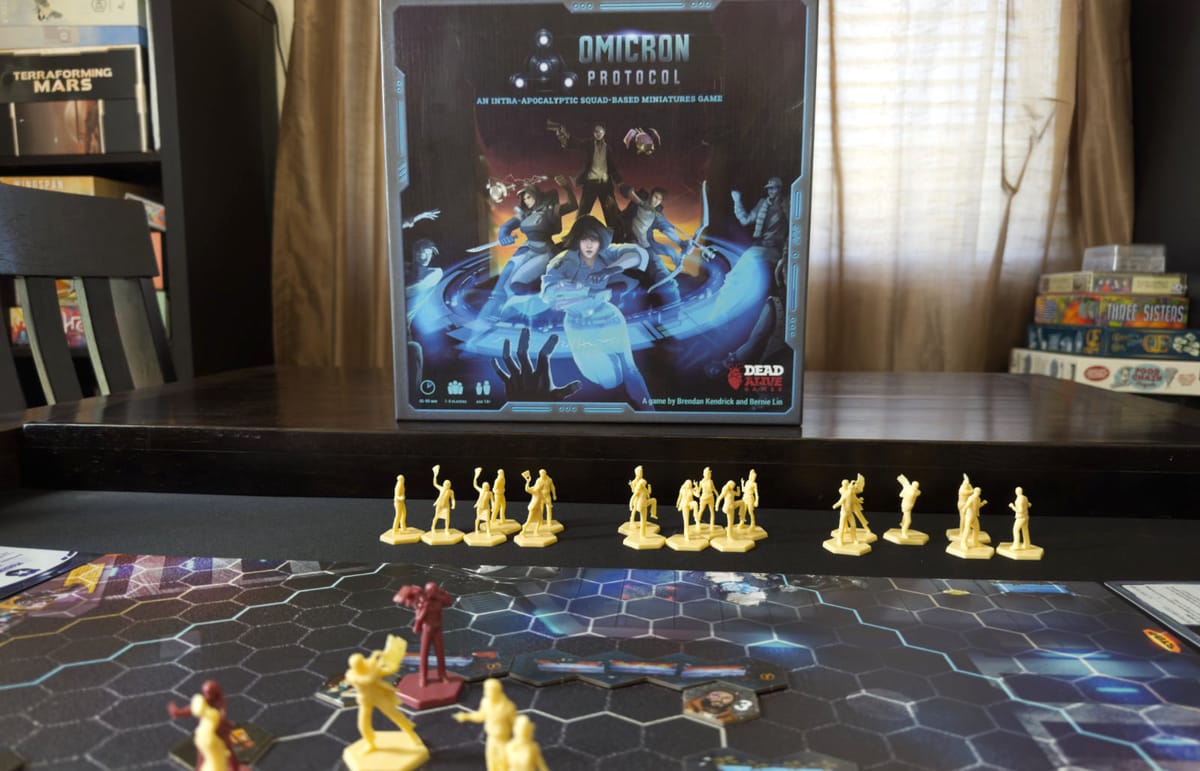
Dead Alive’s Bernie Lin initially pitched Omicron Protocol to me as the perfect introduction to the minis wargaming hobby, and boy was he right. Through a combination of inspired design and sheer generosity of content, Dead Alive put out a complete and near perfect beginner minis game in a box. The main word here is streamlining, as veterans will quickly see the care taken to trim the fat from mainstay mechanics to provide an experience that is simultaneously true to the genre while also welcoming to newcomers. That said, it might not be something I’d recommend to those same veterans.
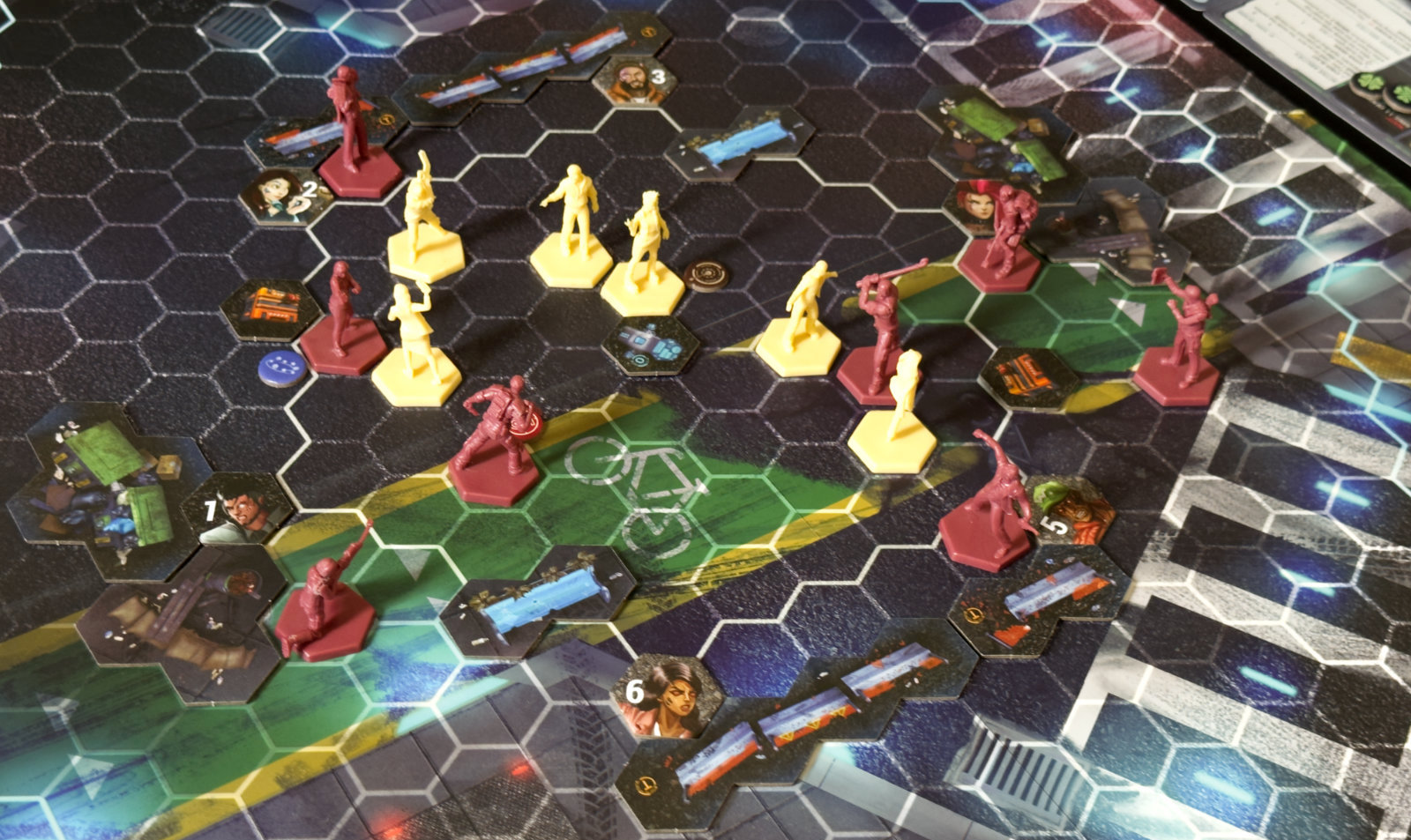
The use of a hex map is a deceptively huge step, as it immediately simplifies so much without dumbing anything down. Movement and range no longer require rulers, all you’ve got to do is count hexes. Similarly, AoE effects don’t need templates as affected hexes are indicated on the relevant card. While line of sight may occasionally require a straightedge, it is determined by the active mini’s ability to draw an unoccupied line from a corner of their hex to a corner of the target’s hex. Journeymen of the hobby may have experienced the nightmare of squinting from their mini to argue about how much of their target is obscured to determine cover, but here the rule is “f the target is in terrain, there’s an attack penalty”. Engagement rules have eliminated the need to constantly monitor minis’ melee ranges, instead simply requiring adjacency to give a penalty to minis shooting into an engagement and providing the opposing mini of anyone leaving engagement a free melee attack. One of the most common snags for neophytes is terrain- purchasing, assembly, determining how much of what type to use and where to place it can be daunting. Omicron Protocol uses scenarios that clearly dictate where objectives, the punchboard terrain, deployment zones, and any other relevant tokens are placed.
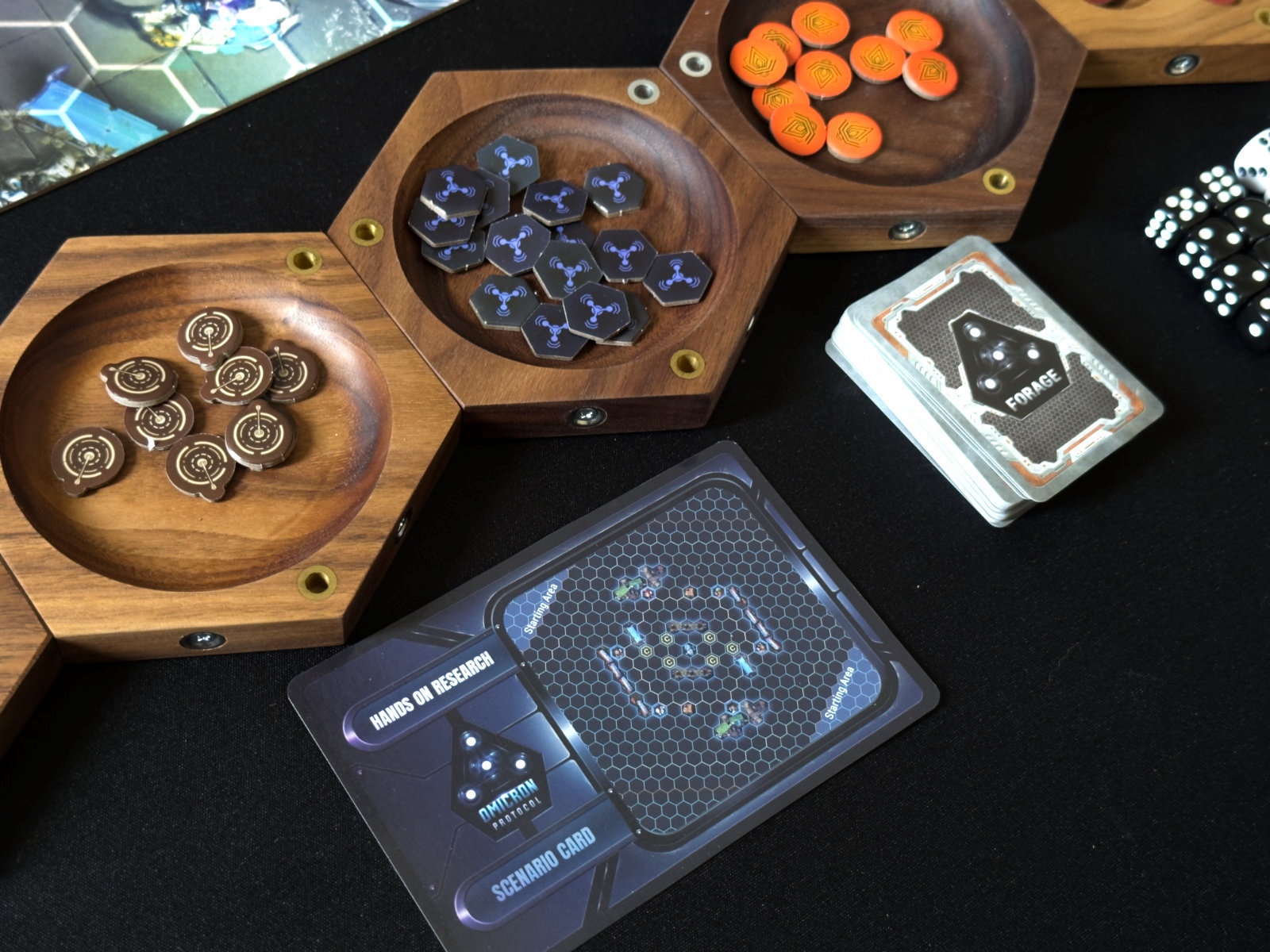
List building is one of the places where this simplification hits an unfortunate, but necessary, snag. The genre standard is that matches have a predetermined points allotment, which players use to purchase their units and upgrades. Omicron Protocol instead opts to have players secretly pick four of their faction’s six characters. If you’ve played a minis game before, you know that half the fun is theorycrafting how your units play off each other and cover each other’s weaknesses to have a plan for how the game will play out before you put anything on the table. This trimmed-down approach restricts that quite a bit. Honestly, though, it’s a worthy sacrifice to keep this game from overwhelming fresh meat, and it means that the box ships with everything you need to play the full game, instead of other games which require several boxes and a used car’s worth of cash to get out of the kiddie pool.
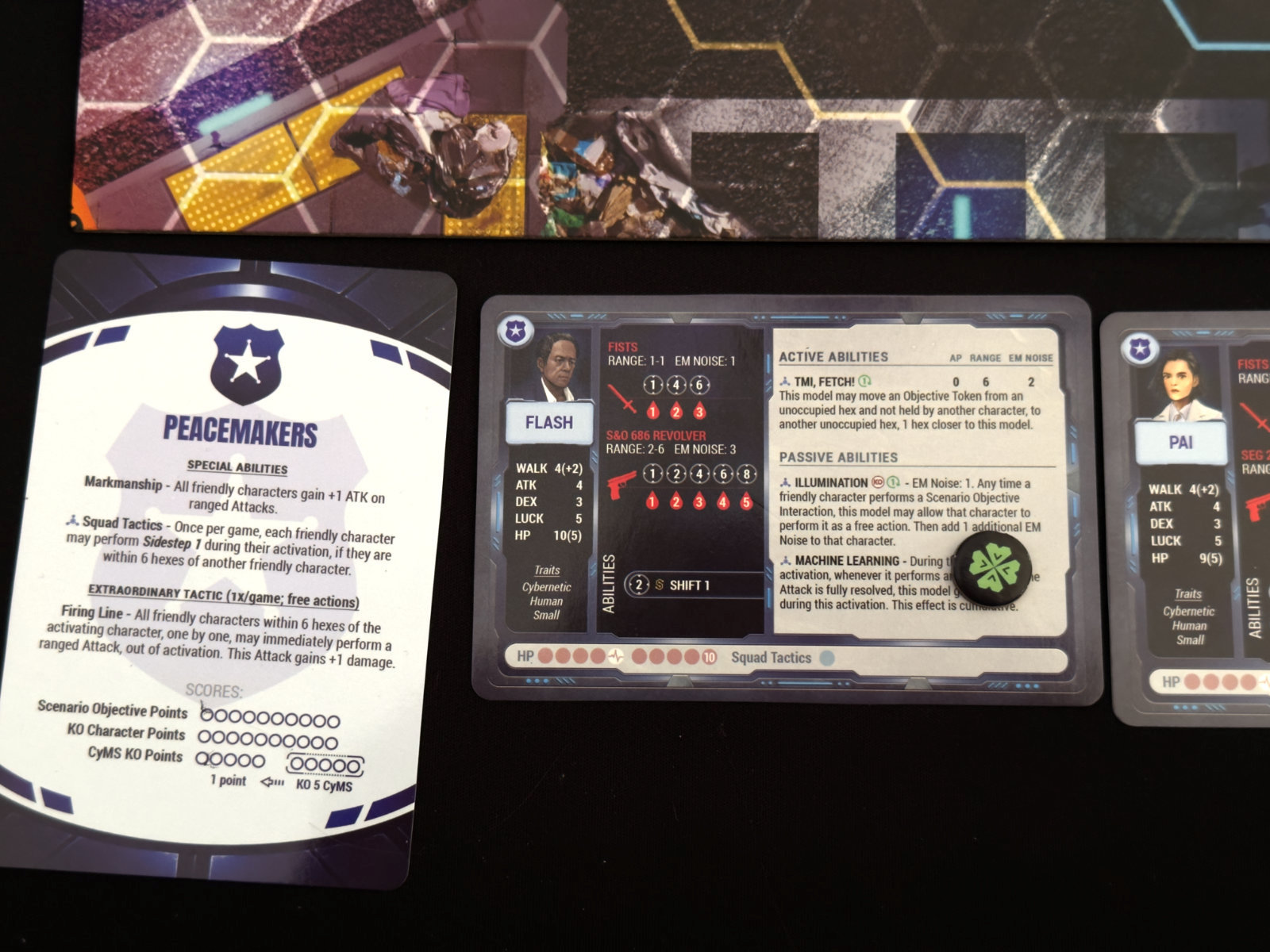
When Omicron Protocol hits the table, it once again shows off the innovations that make this a great choice for new players, though it ultimately winds up feeling tactically suffocating for returning players. The flow uses now ubiquitous alternating activations, with players taking turns activating characters that they haven’t used that round, moving them, attacking enemies, interacting with objectives, and using special abilities. All these have costs, in some combination of the handful of action points players get for a round, or in generating noise. Omicron Protocol features the luck mechanic, which feels similar to cheating fate from Malifaux while sticking to dice. Whenever a player rolls dice for a character, they can trade in a number of dice equal to or greater than their luck value to generate that much luck for that character, which can be used later to modify die results, avoid incoming damage, or remove a condition. Importantly, characters don’t die in Omicron Protocol; instead, they are KOd, scoring their opponent Victory Points, hampering their next activation and putting them at their recovery health. At the end of each character’s activation, all of the third-party non-player CyMS models within a radius equal to the noise generated by, or adjacent to, the activated character activate. Their opponent can move these CyMS towards the offending character, and have them attack if they’re able. Once all characters have activated, CyMS spawn according to noise generated and that scenario’s rules. At the risk of belaboring the point, the four characters apiece is a perfect amount to introduce somebody to minis wargames. It eliminates a lot of the decisions present in other squad level games like Crisis Protocol or Malifaux, let alone the armies of 40K or Legion, making for a more rookie-friendly experience.
If diving right into a competitive game is too daunting for you, Omicron Protocol comes with solo and cooperative rules. These modes play very similarly to the base game, with the simple addition of beefed-up CyMS and new rules for their movement (since you won’t have an opponent to do that part). The co-op mode differs but expands on the solo mode in the same unfortunate way that War of the Ring and Rebellion does, going from two to four players by simply dividing the resources between players. Not a big fan.
All that said, I wholeheartedly recommend Omicron Protocol, and it would be on the top of my list of suggestions if you or a friend are interested in the world of moving tiny plastic people around and having them fight for your entertainment. However, that comes with some caveats. The art, which would have passed a decade ago, is noticeably substandard. Likewise, the minis are just ok, while companies are putting out pieces so gorgeous that people that don’t even play their games are purchasing them to paint and display. Additionally, they could use at least a base coat of their faction’s color for readability along with a wash. If I were being generous, I could say that this is Omicron Protocol providing another onboarding experience, but I think that’s going a bit far.
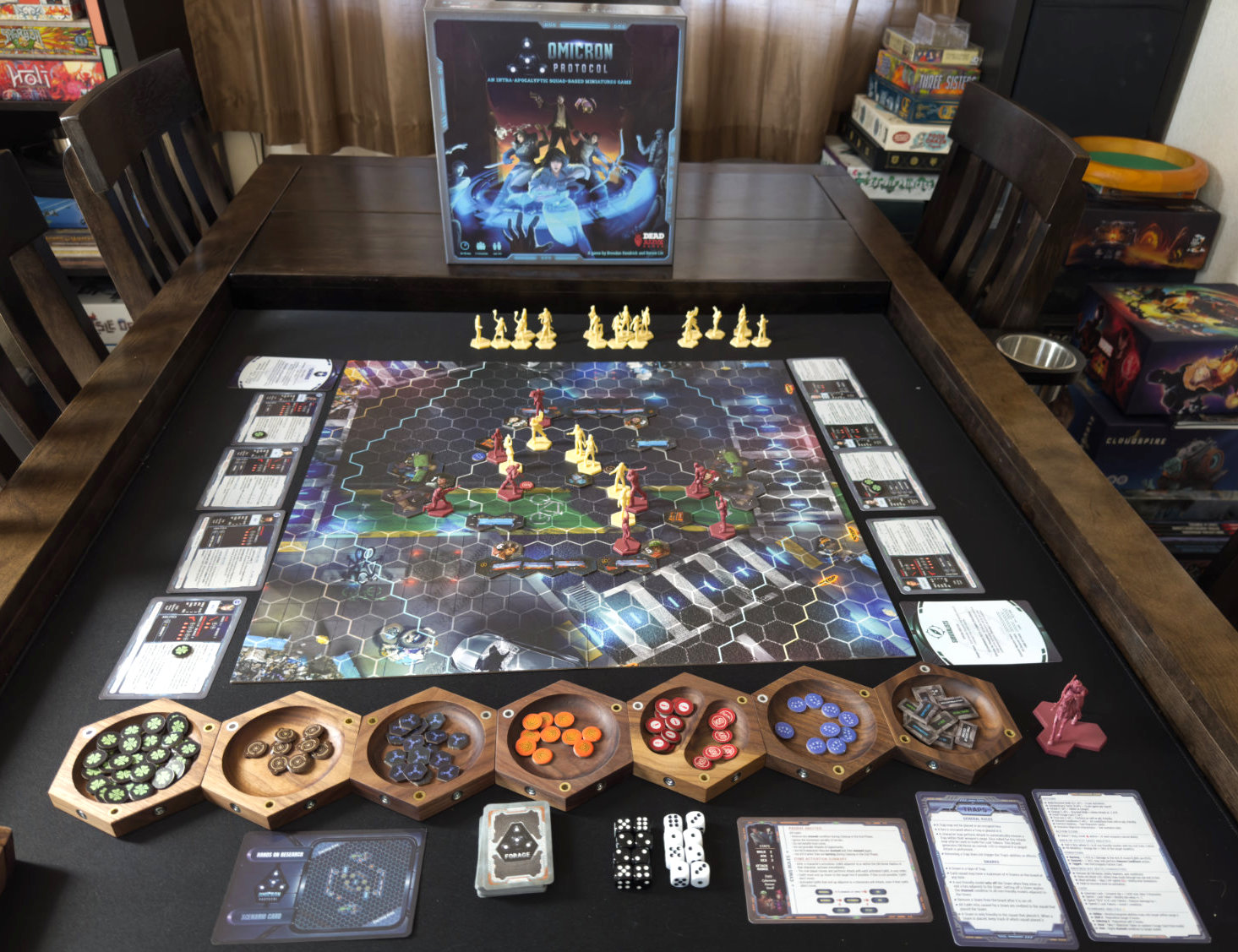
Omicron Protocol
Excellent
Omicron Protocol is the omega gateway game for the minis hobby, just don't mistake it for its heavier brethren.
Pros
- Successfully streamlines minis wargaming while staying true to the genre's feel
- The CyMS and luck mechanics feel great and innovative
- The whole game is in this box, you don't have to buy anything else to get the real experience
Cons
- Small unit count and streamlined rules can feel restrictive to people who are familiar with the hobby
- The art and minis are mediocre, when they could have been stunning
- Co-op is simply Solo with players splitting characters between them
